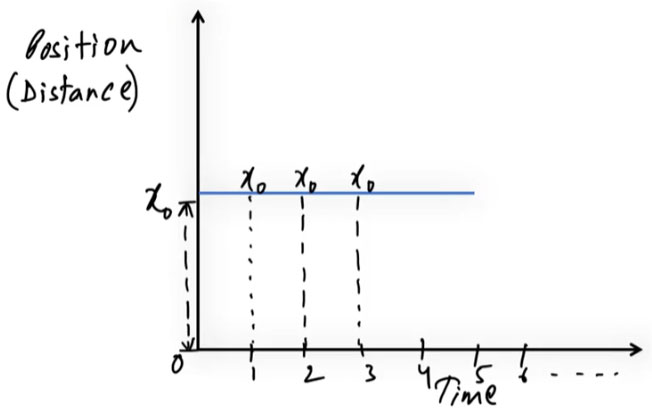Physics and Mathematics
Uniform Speed
1. Definition
An object is said to have uniform speed if it covers equal distances in equal intervals of time, however small the intervals may be.
[\text{Uniform Speed} \Rightarrow \dfrac{\Delta s_1}{\Delta t_1} = \dfrac{\Delta s_2}{\Delta t_2} = \dots]
The distance–time graph for uniform speed is always a straight line with a constant positive slope.
2. SI Unit
[\text{SI Unit} = \text{metre per second (m·s}^{-1})]
3. Dimensional Formula
[\text{Uniform Speed}] = [M^{0} L^{1} T^{-1}]
4. Key Features
- Speed remains constant throughout the motion.
- There is no acceleration [(a = 0)].
- The slope of the position–time graph remains constant.
- Example: A car moving steadily at 40 km/h along a straight highway.
5. Mathematical Expression
If an object covers a distance [s] in time [t],
[v = \dfrac{s}{t}]
If it moves at uniform speed for different intervals:
[v = \dfrac{s_1}{t_1} = \dfrac{s_2}{t_2} = \dots]
6. Graphical Representation
- Position–Time Graph: Straight line with constant slope.

- Speed–Time Graph: Straight line parallel to the time axis.
7. Practice Questions
Solved Examples
Q1. A car covers 150 km in 3 hours at uniform speed. Find the speed.
Solution:
[v = \dfrac{s}{t} = \dfrac{150}{3} = 50\text{km/h}]
Q2. A train moves at uniform speed and covers 600 m in 30 s. Find its speed in m/s and km/h.
Solution:
[v = \dfrac{600\text{m}}{30,\text{s}} = 20\text{m/s}]
Convert to km/h:
[20 \times 3.6 = 72\text{km/h}]
Q3. A car travels at a uniform speed of 54 km/h. How far will it go in 20 minutes?
Solution:
Convert 20 min → [\dfrac{20}{60} = \dfrac{1}{3}\text{h}]
[s = v \times t = 54 \times \dfrac{1}{3} = 18\text{km}]
Q4. A cyclist rides at uniform speed and covers 1.5 km in 5 minutes. Find the speed in m/s.
Solution:
Convert 1.5 km → 1500 m; 5 min → 300 s.
[v = \dfrac{1500}{300} = 5\text{m/s}]
Conceptual Questions (With Answers)
1. Define uniform speed.
An object has uniform speed if it covers equal distances in equal intervals of time.
2. What is the SI unit and dimensional formula of uniform speed?
SI Unit: m·s⁻¹
Dimensional Formula: [M⁰ L¹ T⁻¹]
3. Does an object moving at uniform speed have zero acceleration?
Yes. Since speed is constant, acceleration is zero.
4. How does the position–time graph look for uniform speed?
It is a straight line with constant positive slope.
5. How does the speed–time graph look for uniform speed?
It is a straight horizontal line parallel to the time axis.
6. Can a car moving at 60 km/h be said to have uniform speed?
Only if it maintains 60 km/h throughout the journey without fluctuations.
7. What happens to the distance covered if the time interval doubles?
Distance also doubles because v = s/t remains constant.
8. Can an object at rest be said to have uniform speed?
Yes, its speed is uniformly zero.
9. Give two real-life examples of uniform speed.
(i) A conveyor belt in a factory.
(ii) A ceiling fan’s blade tip (neglecting air resistance).
10. If an object covers 10 m every second, what is its speed?
Speed = 10 m ÷ 1 s = 10 m/s.
8. Common Misconceptions / FAQs
1. Does uniform speed mean uniform velocity?
Not always. Velocity depends on both speed and direction; if direction changes (e.g., circular motion), velocity is not uniform.
2. If an object moves in a circle at constant speed, is it uniform speed?
Yes, its speed is uniform, but velocity changes because direction keeps changing.
3. Does a constant reading on a car’s speedometer guarantee uniform speed?
Not exactly — small variations may occur, but ideally yes if the reading remains steady.
4. Can an object with uniform speed have changing distance covered in each second?
No. In uniform speed, distance covered in each second remains the same.